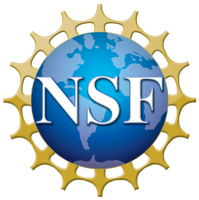| Chiara Damiolini | |
A gentle introduction to Conformal Blocks |
| |
Spaces of conformal blocks are naturally constructed starting from a geometric datum (a projective curve with some marked point) and a
representation-theoretic input (a vertex algebra V and some V-modules).
Varying the geometric data, these conformal blocks define sheaves on the moduli space of curves which satisfy particularly nice
combinatorial and functorial properties.
In tonight's talk I will give a gentle introduction to these objects.
No prior knowledge of vertex algebras or moduli of curves will be required.
|
| Giorgio Ottaviani | |
The Hessian Map |
| |
The Hessian map is the rational map associating to each homogeneous polynomial in r+1 variables its
Hessian, which is the determinant of its Hessian matrix.
Gordan and Noether proved in 1876 that the Hessian map is not defined exactly on cones for
r≤3 and provided examples of polynomials in more variables with vanishing Hessian which are not cones.
The Hessian map is equivariant for the action of SL(r+1), we briefly discuss the invariant-theoretical point
of view.
An interesting open problem is if the Hessian map is birational on its image.
We discuss this problem and we expose some results obtained jointly with Ciliberto.
|
| Juanita Duque-Rosero | |
Local heights on hyperelliptic curves for quadratic Chabauty |
| |
The method of quadratic Chabauty is a powerful tool to
determine the set of rational points on curves. A key input for this
method is the values of local height functions. In this talk, we will
discuss an algorithm to compute these local heights at odd primes v
not equal to p for hyperelliptic curves. We will also explore
examples of how this work extends the reach of quadratic Chabauty to
curves previously deemed inaccessible. This is joint work with
Alexander Betts, Sachi Hashimoto, and Pim Spelier.
|
| Pierrick Bousseau | |
The KSBA moduli space of log Calabi-Yau surfaces |
| |
The KSBA moduli space, introduced by Kollár, Shepherd-Barron, and Alexeev, is a natural generalization of the moduli space of stable
curves to higher dimensions.
It parametrizes stable pairs (X,B), where X is a projective algebraic variety satisfying certain conditions
and B is a
divisor such that KX+B is ample.
This moduli space is described concretely only in a handful of situations: for instance, if X is a toric variety and
B=D+\epsilon C,
where D is the toric boundary divisor and C is an ample divisor, it is shown by Alexeev that the KSBA moduli space is a toric
variety.
Generally, given a log Calabi-Yau variety (X,D) consisting of a projective variety X and a maximal anticanonical
divisor D and an ample divisor C on X, it was conjectured by Hacking, Keel, and Yu that the
KSBA moduli space of stable pairs
(X, D+ε C) is still toric (up to passing to a finite cover).
In joint work with Alexeev and Arguz (arXiv:2402.15117), we prove this conjecture for all log Calabi-Yau surfaces.
This uses tools from the minimal model program, log smooth deformation theory and mirror symmetry.
|
| Hannah Larson | |
Cohomology of moduli spaces of curves |
| |
The moduli space Mg of genus g curves (or Riemann surfaces) is a central object of study in algebraic geometry.
Its cohomology is important in many fields.
For example, the cohomology of Mg is the same as the cohomology of the mapping class group, and is also related to
spaces of modular forms.
Using its properties as a moduli space, Mumford defined a distinguished subring of the cohomology of Mg called the
tautological ring.
The definition of the tautological ring was later extended to the compactification Mg-bar and the moduli spaces with
marked points Mg,n-bar.
While the full cohomology ring of Mg,n-bar is quite mysterious, the tautological subring is relatively
well understood, and conjecturally completely understood.
In this talk, I will ask the question: which cohomology groups Hk(Mg,n-bar) are
tautological? And when they are not, how can we better understand them?
This is joint work with Samir Canning and Sam Payne.
|
Maria Fox | |
Ekedahl-Oort and Newton Stratifications |
| |
We will discuss two important invariants of abelian varieties in characteristic p: the p-torsion subgroup and
the p-divisible group.
Given a moduli space ℳ of abelian varieties in characteristic p, these two invariants can each be used to create a
stratification of ℳ.
We will see in several concrete examples that these two stratifications are very different, reflecting the fact that these two invariants
capture very different attributes of the abelian varieties.
The new result in this talk is joint with D. Bhamidipati, H. Goodson, S. Groen, S. Nair, and E. Stacy.
|
| Alicia Lamarche | |
Wonderful compactifications, toric varieties, and derived categories |
| |
Given a complex Lie group G of adjoint type, the wonderful compactification Y(G)
(originally described by work of DeConcini-Procesi) is a compactification of G by a divisor with simple normal crossings.
These groups are specified by their Dynkin diagrams and corresponding root systems, from which one can construct a toric variety
X(G).
In this talk, we will discuss ongoing work with Aaron Bertram that aims to succinctly describe the derived category of coherent
sheaves of Y(G) and X(G).
|
| David Eisenbud | |
Looking inside infinite resolutions |
| |
Hand computation of even a few steps in an infinite minimal resolution is very slow, but with systems such as Macaulay2 one can make many
experiments leading to observations that I find surprising.
Some have become theorems, others are quite mysterious.
In this talk I'll describe some of the new phenomena that I and others have seen, and some of the guesses (conjectures?) that we have
made.
The new results are part of joint work with Hai Long Dao, Bernd Ulrich, Claudia Polini and others.
|



